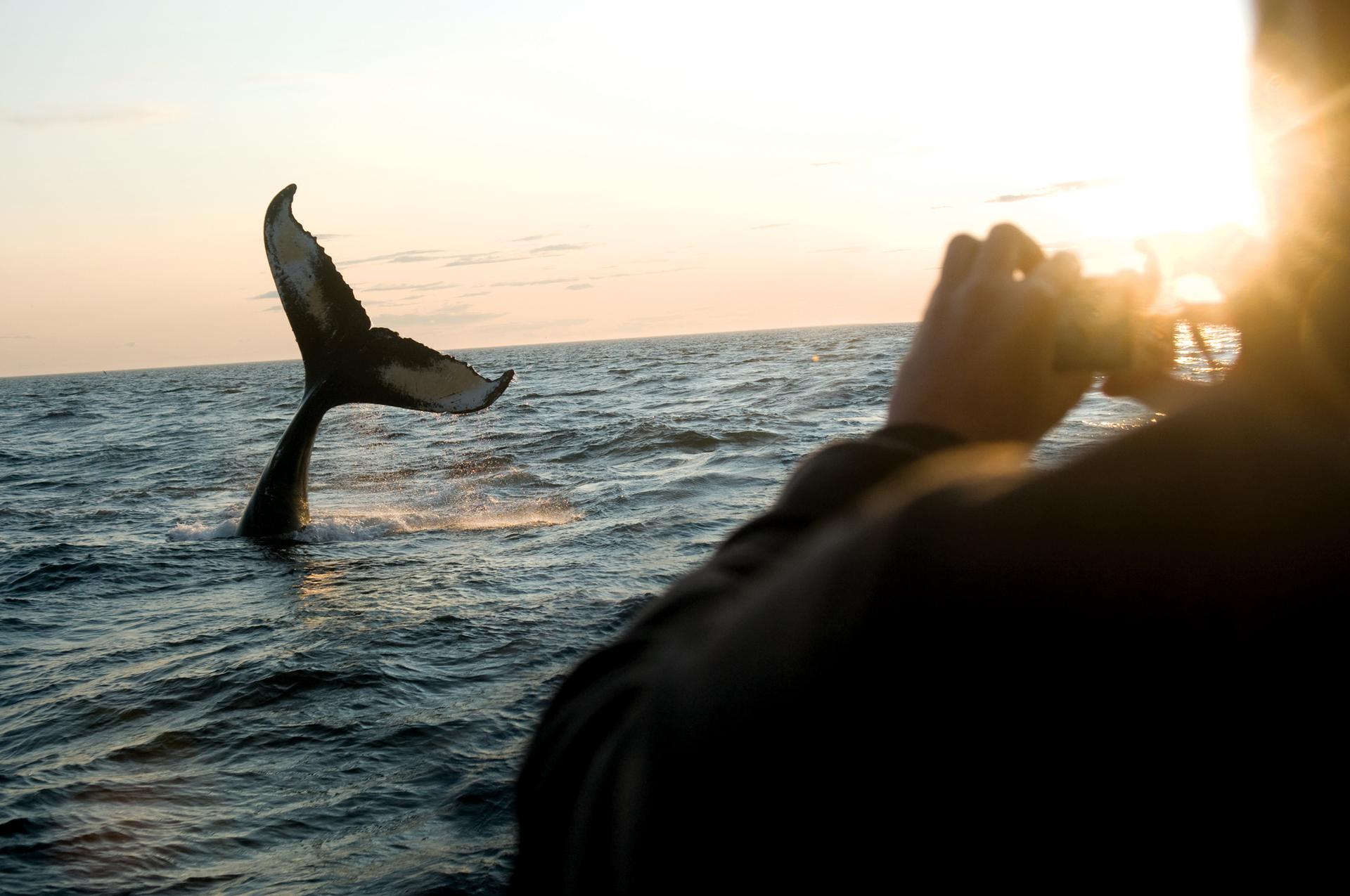7 tips to help you prepare for whale watching in Nova Scotia

Planning to hop aboard a whale watching tour in Nova Scotia but aren't sure where to start?
Perhaps you plan to book a tour on Nova Scotia's Bay of Fundy for the chance to spot some of the 12 different species of whales that spend their spring, summer and fall months here? Or maybe you're planning to visit Cape Breton Island where you can whale watch from a boat or zodiac?
To help you prepare for your Nova Scotia whale watching tour, we've pulled together the following list of tips and recommendations.
Where am I most likely to see whales on a whale watching tour in Nova Scotia?
While Nova Scotia is almost completely surrounded by water, there really are two areas that offer guaranteed whale sightings - the Bay of Fundy and in the Northumberland Strait/Gulf of St. Lawrence around Cape Breton Island.
Whale watching on the Bay of Fundy versus whale watching in Cape Breton?
Each summer and fall, the Bay of Fundy is a rich feeding and breeding ground for whales and other marine life. With the highest recorded tides according to the Guinness Book of World Records, the incredible Bay of Fundy tides combined with the rushing currents help to concentrate food sources for the whales and other sea life.
Whales most commonly seen in the Bay of Fundy include humpback, finback, minke and pilot although sei and North American right whales are often spotted as well. Watch for dolphins, porpoises, seals, and seabirds, and if you're lucky, you'll spot Ol' Tom, an Orca that has visited the Bay of Fundy annually since 2012.
While pilot and minke whales are plentiful around Cape Breton Island and there is always a chance you'll spot humpback, finback, and sei whales too. Dolphins almost always appear and are always entertaining to watch and throughout the summer and fall months, whale watching tour operators in Cape Breton even report seeing sunfish, leatherback turtles, seals, and a variety of seabirds, including puffins.
The view of Cape Breton Island from the water is an added bonus. Seeing the famous Cabot Trail and the Cape Breton Highlands mountain range with dramatic oceanside cliffs, hidden beaches, meadows, waterfalls, geological rock formation masterpieces, and more - the views are as amazing as the whale watching!
Boat tour versus zodiac tour
You have two very different and equally safe boat tour options to consider for your whale watching adventure. It’s important to note that Nova Scotia whale watching tour operators work together to locate and report whale sightings to allow tour groups to see whales from a safe distance to ensure the safety of passengers and whales alike.
A tour aboard a zodiac means you can travel faster and any sightings you have will be enjoyed at water level.
A tour aboard a fishing-style boat is more steady, making for a smoother ride and offering more shelter from the elements as well as washroom facilities.
What to expect when you find whales
Whales are naturally curious - especially humpback whales - so depending on the day, you never know what you'll experience. Sometimes you'll encounter whales feeding on plankton and krill so they will be on the surface and may deep dive (have your camera ready for photos of the tail) out of sight before coming back to continue feeding at the surface.
Other times they will put on a show by slapping their fins or tails on the surface, rolling, or even breach - the most anticipated part of the show.
Spy hopping is another exciting act to observe as this is when a whale brings their snout and eyes up out of the water to curiously observe whale watching tours. Who's watching who?
Should I book my whale watching tour ahead of my trip?
Whale watching is a popular, family-friendly activity and summer and fall whale watching tours book up fast. It is recommended that you book your tour as soon as you know your travel schedule.
How to dress and what to bring on a whale watching tour
The temperature in Nova Scotia often depends on your distance from the ocean. The air temperature can be 10C/50F cooler when on the water so dress in layers to ensure you are warm enough or cool enough. Sunscreen and sunglasses are a must even on an overcast day.
Whale watching is a family-friendly adventure and depending on the tour you choose, your tour could range from 2 hours to 5 hours in length. Packing snacks and water are recommended.
Oh, and don’t forget your smartphone or camera!